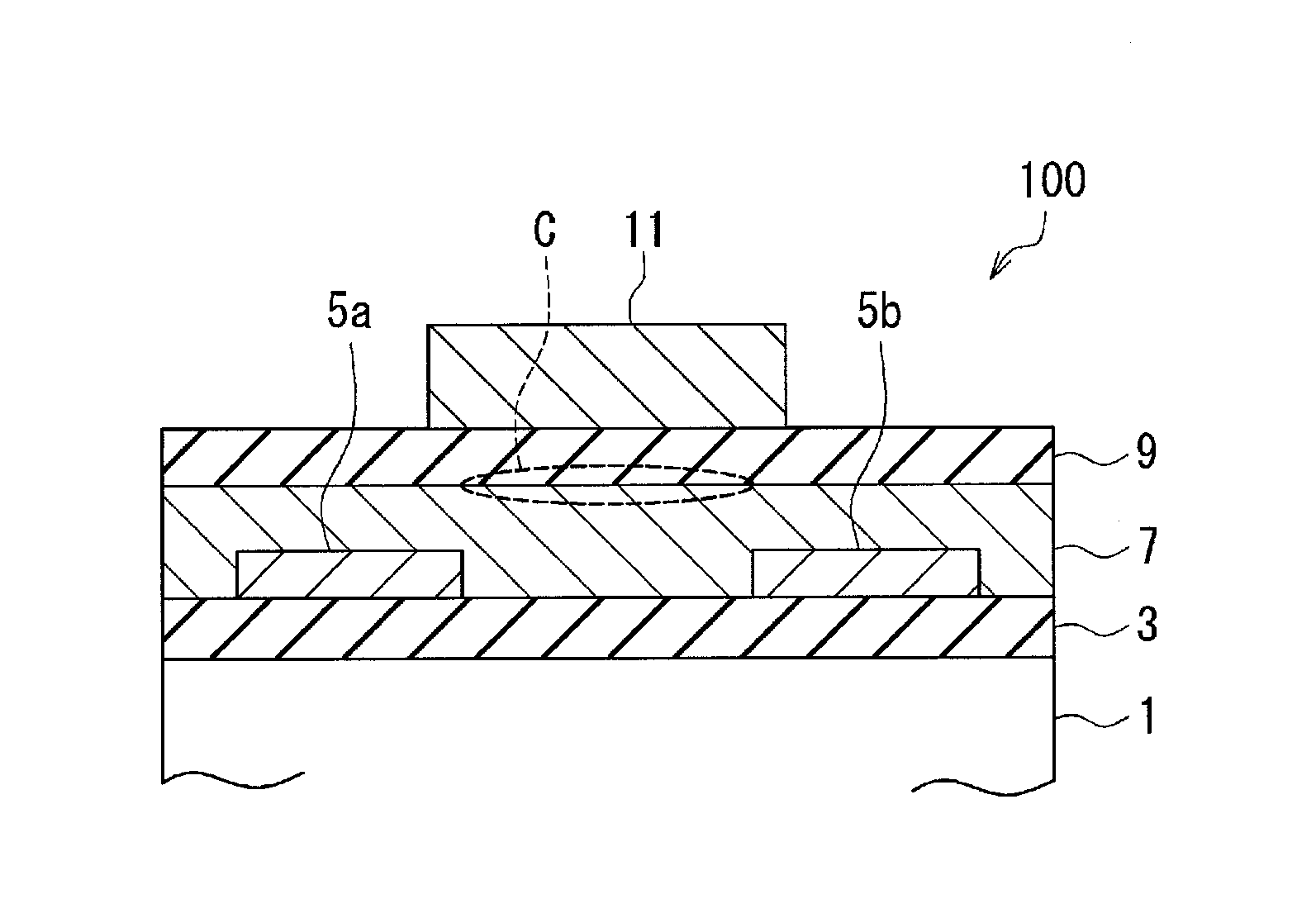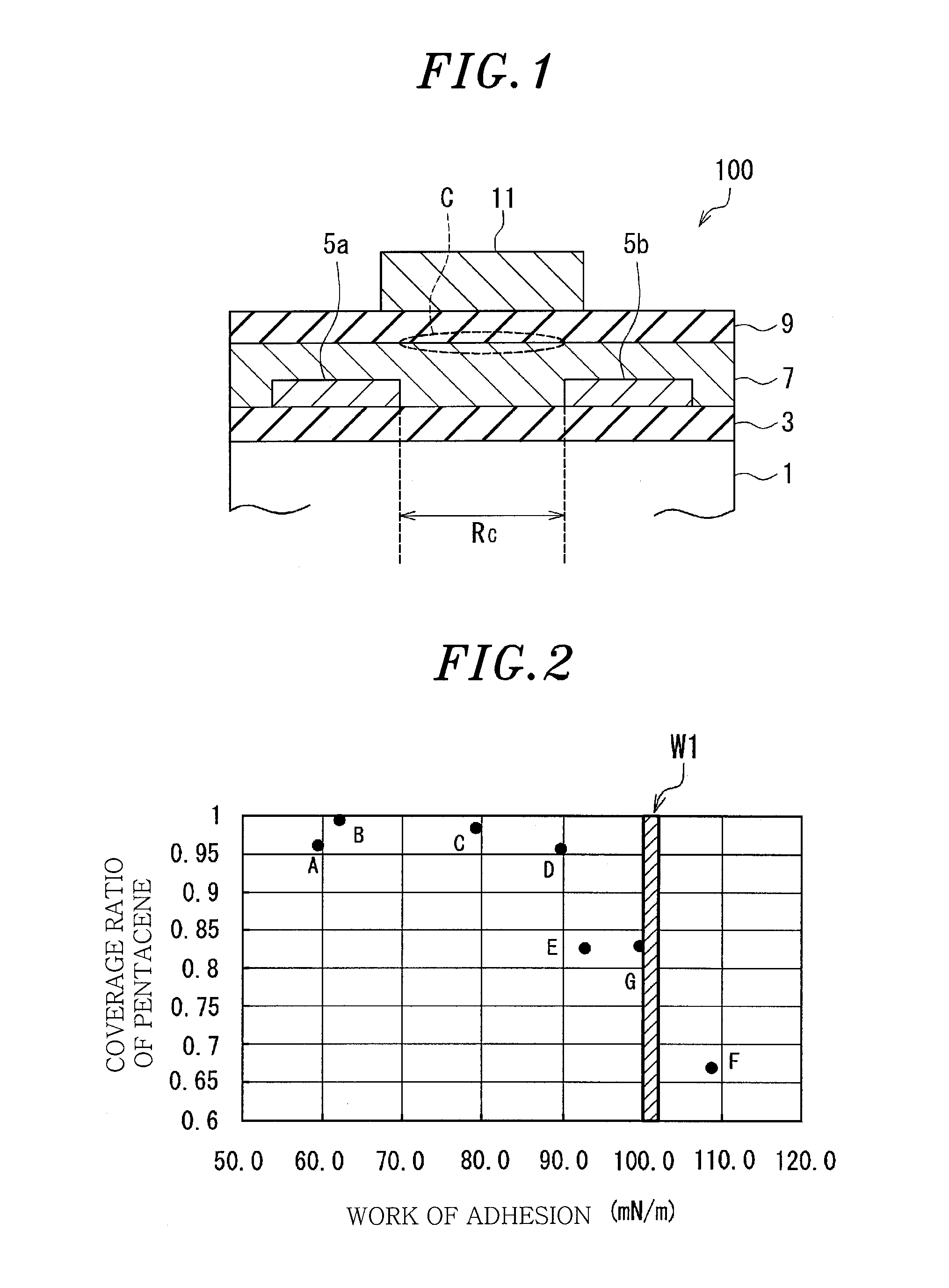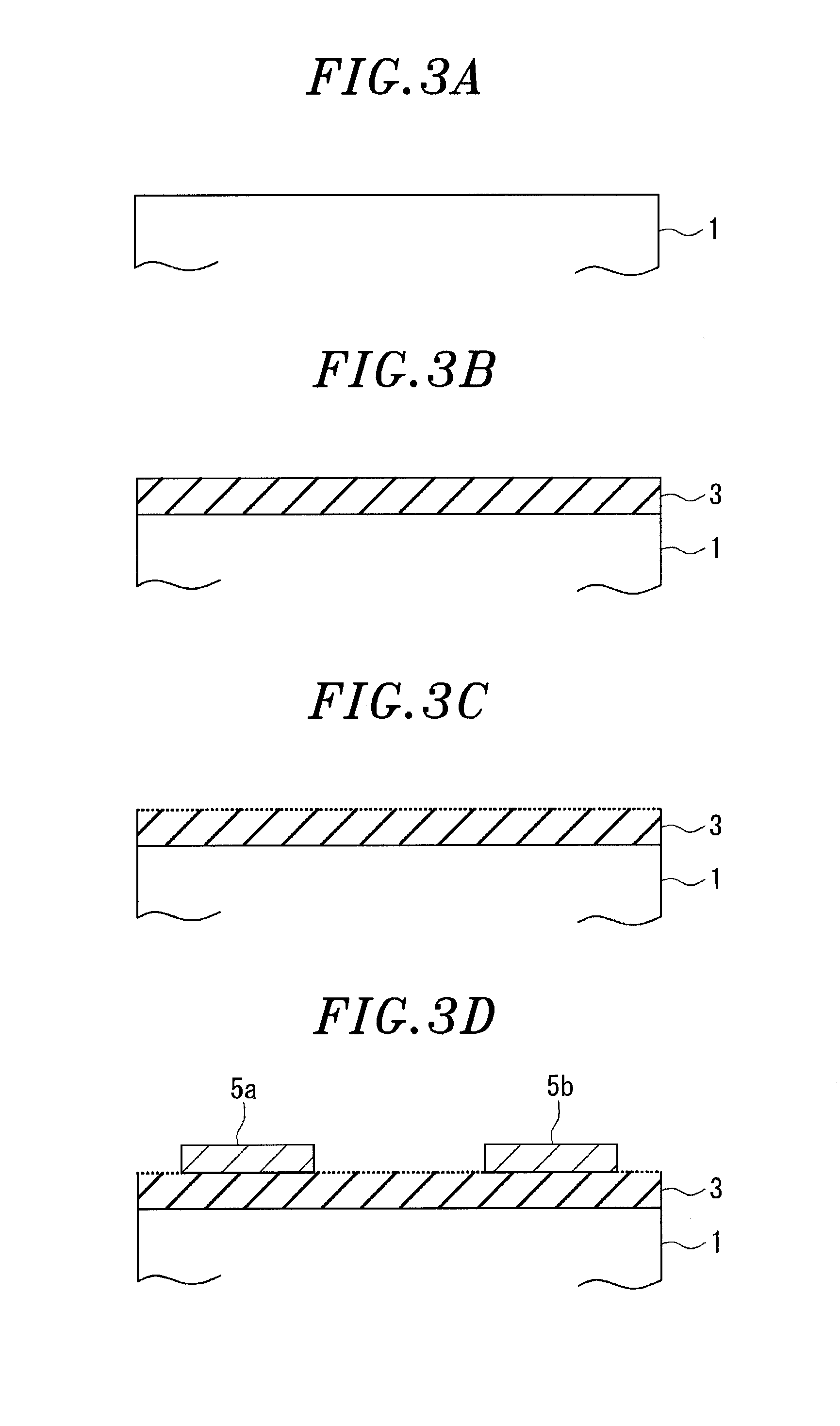Organic transistor and method for manufacturing same
a technology of organometallic transistors and manufacturing methods, which is applied in the direction of thermoelectric device junction materials, semiconductor devices, electrical apparatus, etc., can solve problems such as unsuitable improvement, achieve the effects of improving the regularity of crystals, facilitating the crystal growth of molecules, and increasing grain siz
- Summary
- Abstract
- Description
- Claims
- Application Information
AI Technical Summary
Benefits of technology
Problems solved by technology
Method used
Image
Examples
first embodiment
[0029]FIG. 1 is a cross sectional view showing a schematic configuration of an organic transistor 100 in accordance with a first embodiment of the present invention. The organic transistor 100 has a so-called top gate / bottom contact type structure. In other words, the organic transistor 100 includes: a substrate 1 that is a supporting body; a base insulating layer 3 that is a first insulating film formed on the substrate 1 with a predetermined thickness; a pair of source / drain electrodes 5a and 5b formed in a predetermined pattern on a part of the base insulating layer 3; an organic semiconductor layer 7 laminated so as to cover the source / drain electrodes 5a and 5b and be in contact with the base insulating layer 3; a gate insulating layer 9 as a second insulating layer laminated on the organic semiconductor layer 7; and a gate electrode 11 laminated on the gate insulating layer 9. The surface treatment is performed on the surface of the base insulating layer 3 which is in contact ...
second embodiment
[0094]Hereinafter, a second embodiment of the present invention will be described with reference to FIG. 7. FIG. 7 is a view for explaining a schematic configuration of an organic transistor in accordance with a second embodiment of the present invention. This organic transistor 101 has a so-called top gate / top contact structure. In other words, the organic transistor 101 includes: a substrate 1 that is a supporting body; a base insulating layer 3 that is a first insulating layer formed on the substrate 1 with a predetermined thickness; an organic semiconductor layer 7 laminated to be in contact with the base insulating layer 3; a pair of source / drain electrodes 5a and 5b formed on a part of the organic semiconductor layer 7 in a predetermined pattern; a gate insulating layer 9 that is a second insulating layer laminated on the organic semiconductor layer 7 between the source electrode 5a and the drain electrode 5b; and a gate electrode 11 laminated on the gate insulating layer 9. T...
third embodiment
[0098]Hereinafter, a method for manufacturing an organic transistor (not shown) in accordance with a third embodiment of the present invention will be described with reference to FIG. 8. In the first and the second embodiment, the surface treatment step is performed by the first treatment (i) for inactivating the surface of the base insulating layer 3, the second treatment (ii) for reducing active species on the surface of the base insulating layer 3, or the third treatment (iii) for removing moisture from the surface of the base insulating layer 3, as described above. In the present embodiment, a cleaning treatment for cleaning the surface of the base insulating layer 3 is performed as the surface treatment step before the treatment such as the first treatment (i), the second treatment (ii) or the third treatment (iii) is performed. In other words, in the present embodiment, the surface treatment step includes the treatment such as the first treatment (i), the second treatment (ii)...
PUM
 Login to View More
Login to View More Abstract
Description
Claims
Application Information
 Login to View More
Login to View More - R&D
- Intellectual Property
- Life Sciences
- Materials
- Tech Scout
- Unparalleled Data Quality
- Higher Quality Content
- 60% Fewer Hallucinations
Browse by: Latest US Patents, China's latest patents, Technical Efficacy Thesaurus, Application Domain, Technology Topic, Popular Technical Reports.
© 2025 PatSnap. All rights reserved.Legal|Privacy policy|Modern Slavery Act Transparency Statement|Sitemap|About US| Contact US: help@patsnap.com



